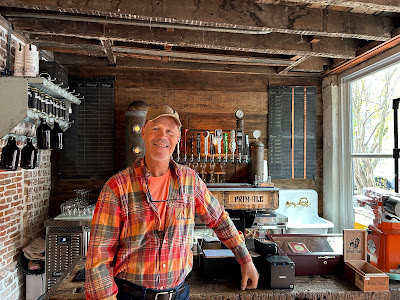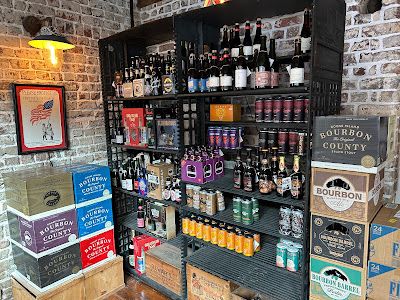However, in the midst of this most recognizable attraction unassumingly sits the oldest commercial building in the Holy City with the added distinction of being the nation's longest-operating liquor store. Located just two blocks from the old city's bustling waterfront, this part of the original walled city of the late 1600's was anything but holy. It was the rompin', stompin' playground for pirates and den of iniquity for seafarer's. Members of Blackbeard's crew, not Blackbeard himself, more than likely prowled and drank liquor from this establishment along with Stede Bonnet and a host of other pirates, many of whom were hung a short distance away in White Point Gardens.
The Tavern at Rainbow Row dates as far back as 1686 according to discovered documents and maps found in Scotland and the Netherlands. Quite possibly Captain William Carse and crew of the Magdalen from Edinborough purchased liquor from the establishment in August of 1743 after unloading its cargo of salt, sailcloth, and, among other items, 96 golf clubs and 432 golf balls consigned to David Deas, a Scottish emigrant who had become a successful Charleston merchant.
Through its three centuries of business, The Tavern has endured the test of unstoppable and sometimes hard-pressed time. It survived the Revolutionary War and the incessant pummeling from the Federal cannons of the Civil War, not to leave unmentioned the numerous historic fires and catastrophic earthquake of 1886 that brought down hundreds of Charleston's buildings.
The Blind Tiger Pub building on Broad Street has such an underground tunnel, which also can be entered through a latched door at the back of the building. Those wanting a drink would have to sneak one in one of the tunnel's many dark nooks. Whether the two tunnels connected is open to question. At this time, I must insert a bit of caution because like many stories from Charleston's past, you must measure its factuality with a grain of Carolina Gold. Following Repeal, The Tavern returned to legal status. It has been the nation's oldest Spirits store in continuous operation. Now that bit of information is as bona fide as its Bluffton Whiskey.
The original building is split into three different addresses. Due to law, spirits must be sold separately from wine and beer. The middle section, which sells wine and beer, is the most fascinating of the three. Its brick, front exterior has an arched double-door flanked by two arched windows, and directly above, a double-window second floor extension all painted in dark green. Inside, the current owners have preserved the shop's legacy by restoring its interior featuring its original hardwood flooring and brick walls with antique furnishings from around the world--a bookshelf from the Library of Congress and an artisan's working table from France. In one of the adjoining rooms is the mysterious latched-door leading to the underground. The third section of the building is unused--at one-time a gallery. Future plans are to open up the wall where the beer taps are presently and turn the unused section into a drinking space with a garden patio outside.The Tavern specializes in local or rare spirits, like a five-grain bourbon made with a Carolina rice variety(Seashore Black Rye) once written off as extinct, and Carolina Gold; a black tea liqueur made from the only large-scale tea plantation in the U.S.(Charleston Tea Plantation); and a vodka made from a rye grain grown on South Carolina's Edisto Island. To acquaint you with the unfamiliar, the shop also offers weekly tastings.
The Tavern has been featured on Southern Charm, Moonshiners, History’s Most Haunted, and Atlas Obscura. With a multifaceted history and a singular focus, The Tavern at Rainbow Row stayed true to its reason for being and never stopped distributing booze. Now that makes for one happy sailor.
 |
| Unused space--future drinking space |
 |
| Entrance to garden patio |
 |
| Future garden patio |
120 East Bay Street, Charleston, SC
Scan code for more stories.
















